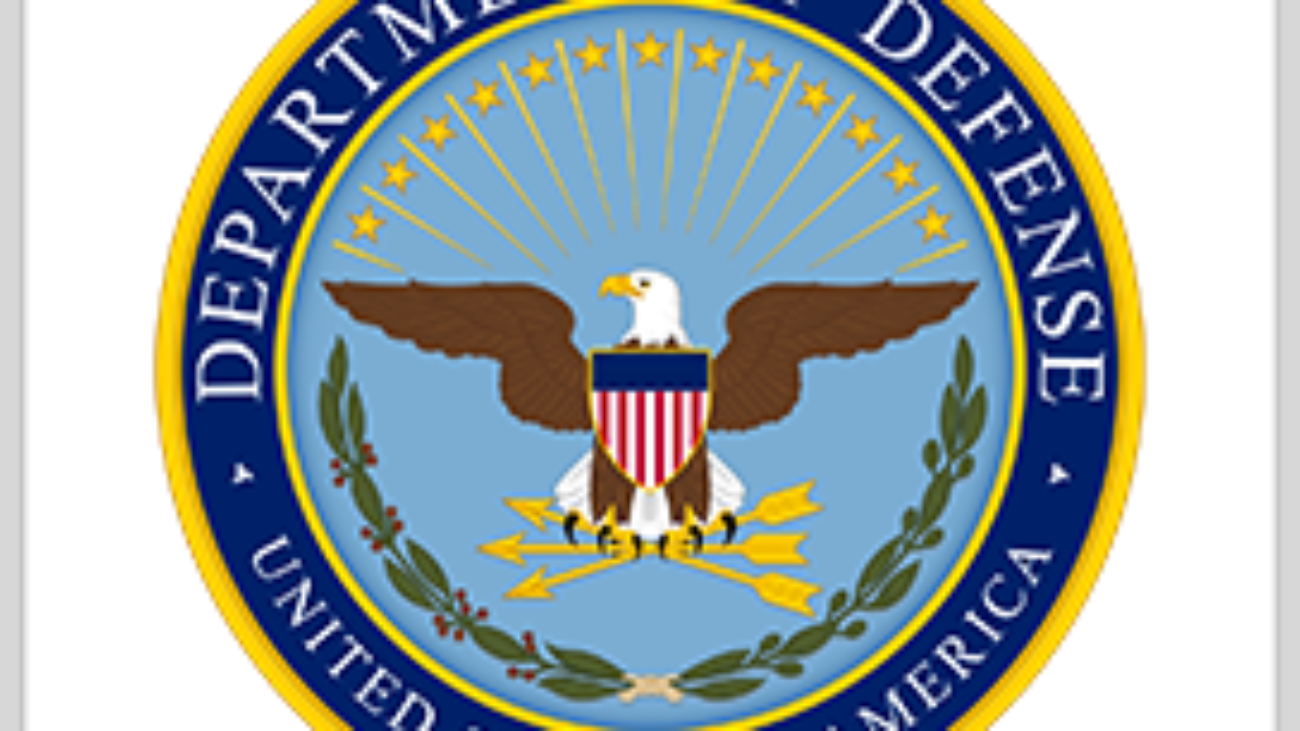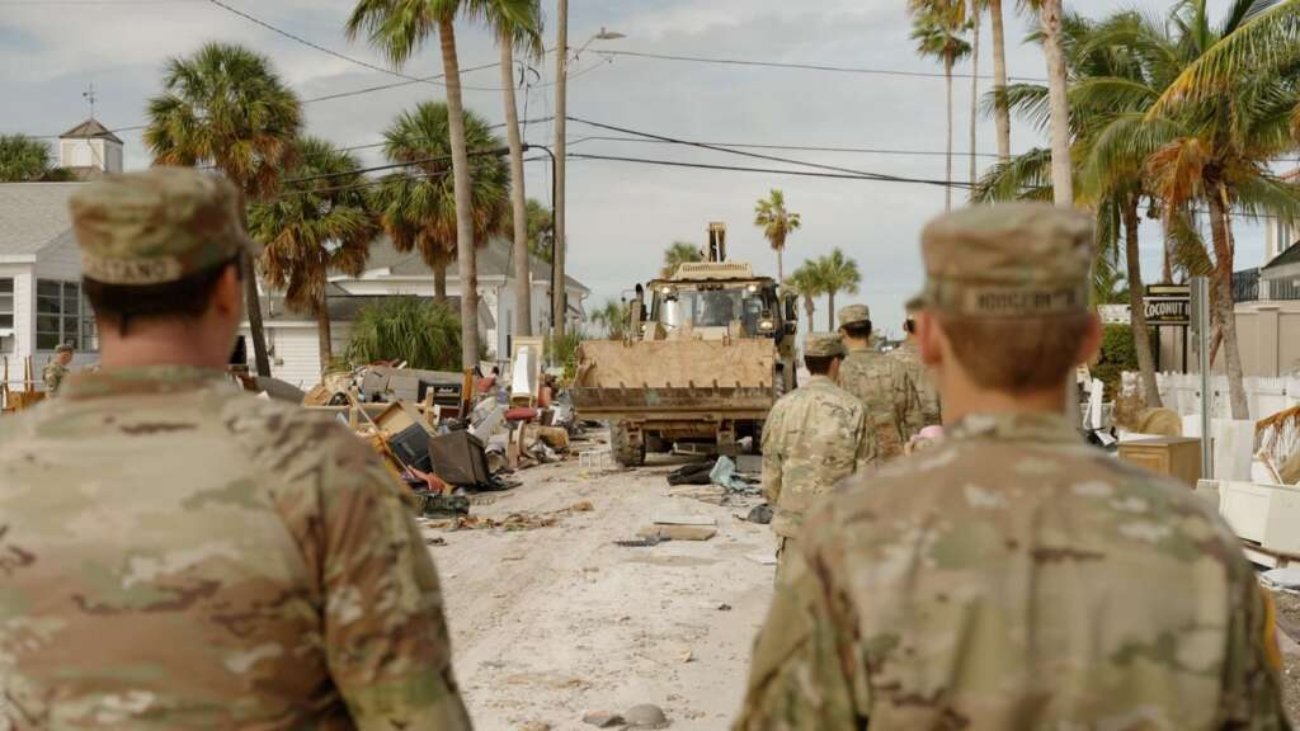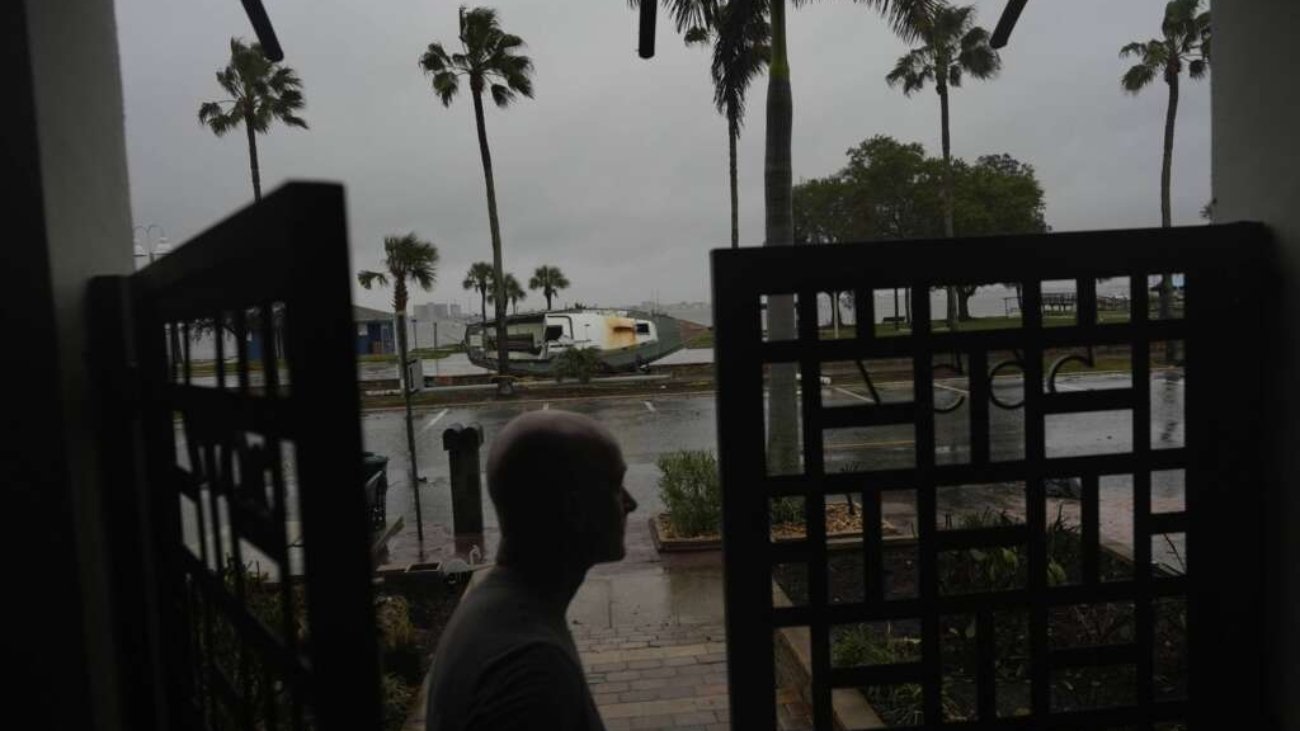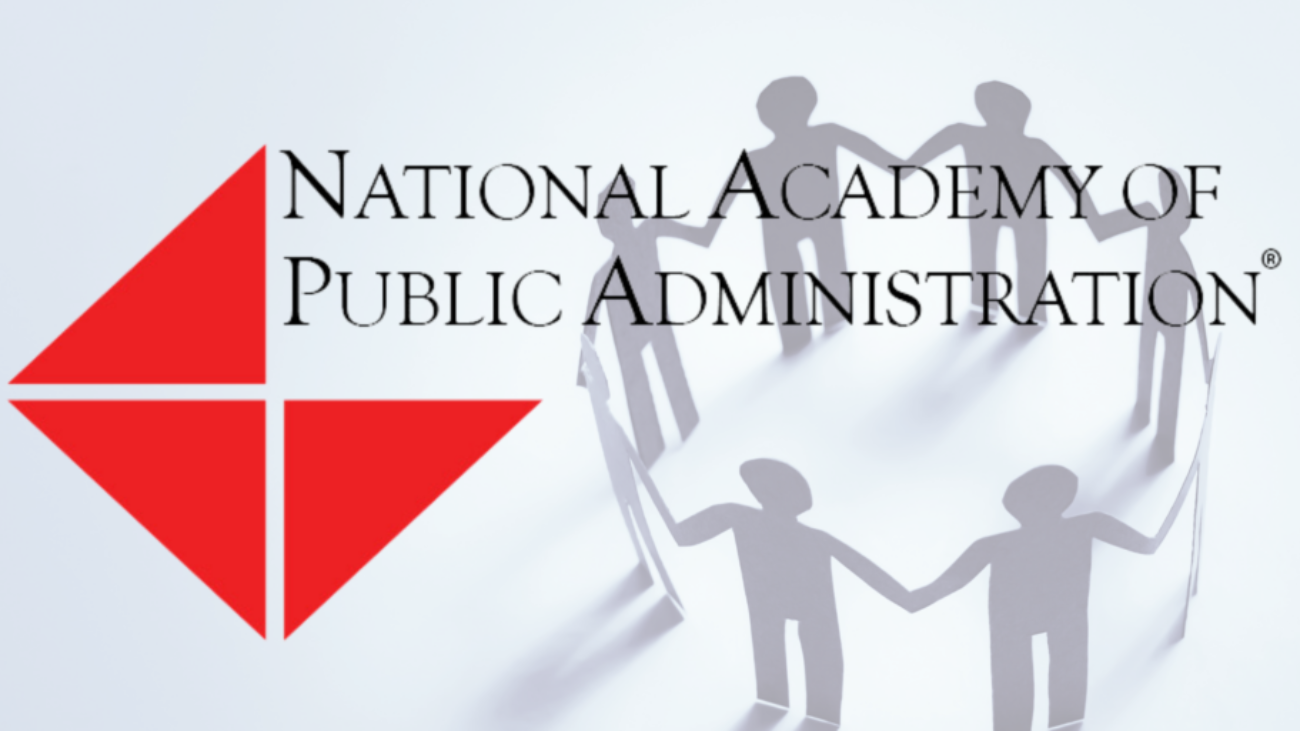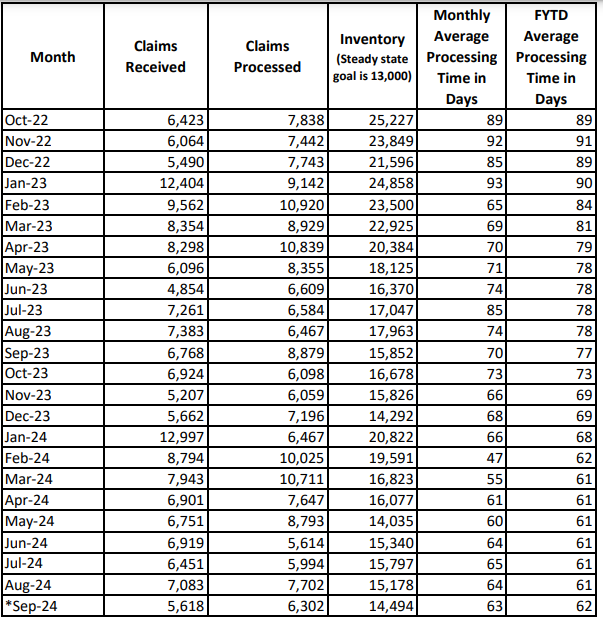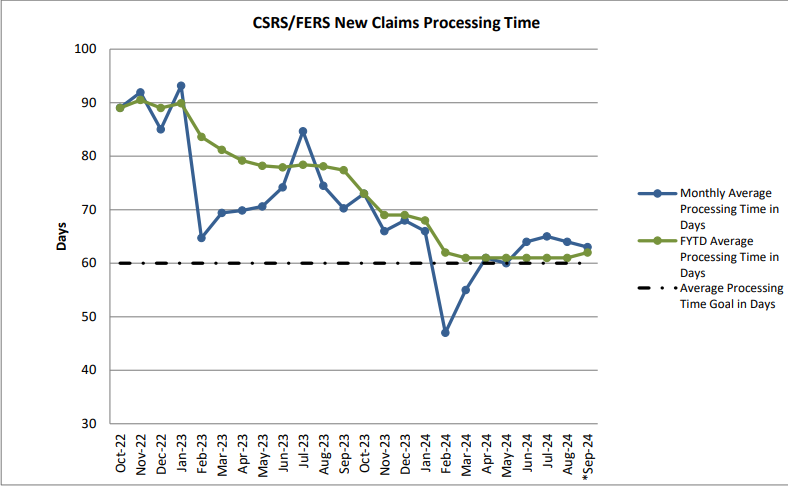A long time civil servant, veteran and advocate for civil service itself will hand the baton to new leadership next year. She’s has lead the National Academy of Public Administration longer than anyone, since 2017. And she’s driven several important Academy initiatives. Terry Gerton joined the Federal Drive with Tom Temin.
Tom Temin And we’ve enjoyed a lot of interviews over the years on something that people may not realize about the Academy, is that it undertakes reports chartered by Congress to look at really problematic issues. And you’ve overseen some really blockbusters.
Terry Gerton Well, we have. And thank you for raising that, because I think it really is important for people to understand that Congress did charter the Academy. We have a mission in law from them, which is to help government leaders at all levels really tackle the tough problems. And so Congress does direct in legislation sometimes that federal agencies engage with us to tackle some of those.
Tom Temin And what stands out in your mind as some of the really big ones? I think of the Maritime Academy.
Terry Gerton Yeah, that was a really important one. And we continue to see the impacts of that. People may not be familiar with that organization, but it is one of the nation’s service academies. It trains merchant mariners. And it’s had a long running issue with sexual assault, with discrimination. But even broader than that, with just facilities management. It’s a military academy, but it’s in the Department of Transportation. So there’s a lot of conflicts, a lot of spread attention. And so I think we were able to make a real difference. The secretary of Transportation now has a focus group that’s tackling those. They’ve gotten more money, they’ve gotten more people. They still have a long way to go.
Tom Temin But I think the value of those reports is that every government leader manager should read them.
Terry Gerton Well, that’s so true. Another one that really got a lot of headlines was our congressionally chartered report on the Office of Personnel Management back in the Trump administration when they had proposed combining OPM and GSA. Congress asked us to go in and look at OPM. And they asked three really interesting questions. One was, what is OPM doing that it’s not directed to do? What are they not doing that they are directed to do? And how much would it take to get them to be the organization that we want? And we’re just so proud of that report. But more importantly, the way that OPM embraced it and made it part of their strategic plan, made a part of their budgeting process, and continues to make progress in really building out the center of government’s personnel and talent management capacity.
Tom Temin And I think another initiative that you get credit for that was not already there at the Academy was the idea of the 12 grand challenges. And that’s been a really interesting journey too, to read about those.
Terry Gerton It really has. We started that idea in 2018 where we thought, we are the National Academy of Public Administration. We ought to create an agenda for the field. And so we did some crowdsourcing, we did some expert engagement, but we released that list of 12 in 2019. And really just kind of in November, and then in 2020, of course, we had COVID. And we thought, well, goodness, did we get it right? Did we not get it right? And I’m so proud of the brains that went into that, because they really stood the test of time. Who knew that water systems would be such an issue, and going through the pandemic truly was. Who knew that we’d be in a place where we really needed to talk about protecting democracy, and we are. And so it really has begun to be adopted by all levels of government we see, especially at changing how local governments are approaching their strategic plans, their workforce engagement, how they’re thinking about combining their efforts across multiple parts of their organization to really get systemic solutions. So I am really proud of that.
Tom Temin All right. We’re speaking with Terry Gerton. She’s president and CEO of the National Academy of Public Administration. She’ll be stepping down from that role at the end of the year. And the other thing you get credit for from the Academy is increasing the funding for it, increasing the facilities and assets that it has. And you’re not doing something like panda bear protection or rain forest or something sexy that people can get behind. National Academy of Public Administration sounds boring. How do you get people to back that type of effort? What kinds of funding have you been able to bring to it?
Terry Gerton Well, we have started a capital campaign, our first ever to build an endowment for the Academy. Congress chartered it, but doesn’t fund it. We are a nonprofit organization. We have to generate our own funds. So we’ve been very prudent in the resources that we have. But now we’re asking people to contribute to the capacity of the academy because its work is more important than ever, as we experience more political polarization, as people really are questioning the value of their government, what does it give them? The Academy is uniquely positioned to bring expertise to all levels of government, whether it’s your local government, your county government, your state government or the federal government to help government work better for the people it’s supposed to serve. And I think now more than ever, it’s an absolutely essential organization because we’re not invested in creating a profitable relationship that generates funds forever. We really are committed to good government. Kind of nerdy, but it’s really important.
Tom Temin So who invests in it?
Terry Gerton Well, right now it’s largely fellows. We do have some nonprofit partners that help us, especially in things like media relationships and funding and grant funding. And then we engage in contracts with government agencies, whether that’s, as we talked about at the top of the show, directed by Congress or whether government agencies at all levels seek us out to do that kind of work. So it’s an ongoing effort to get the word out, an ongoing effort for us to identify those challenges and bring people to the table that we can work with.
Tom Temin But it’s not something that is going to be corporately sponsored, like a lot of nonprofits.
Terry Gerton There is a space for corporations, especially those who are government adjacent. It matters that government is stable. It matters that government is predictable. And those folks have an interest in our engagement with government, making it work better so that they have a predictable environment to operate in. I’d love to leave my phone number with anybody who wants to contribute to our cause.
Tom Temin Well, we’ll post it when we put this interview online. But just a moment, getting back to those 12 grand challenges. Do you feel like they have become kind of the language, the lingua franca for people talking about public administration?
Terry Gerton I think so. In a couple of categories. Well, kind of actually all of them. One is about IT, making government AI ready. People are on that all the time. One is about climate change and climate adaptation and governance around how do we prepare our communities and our states and our institutions. We’ve just seen environmental disaster with the hurricane over the last week. How do we help government agencies prepare for that? Another group is focused around building resilient communities. That’s everything from having a strong economy where people can find meaningful work, to addressing issues of racial and economic justice. And then the other group really is protecting democracy. And it’s about free and fair elections. It’s about a public workforce that’s strong and nonpartisan and expert. So, yeah, those are really the issues that people at all levels of government are working on today.
Tom Temin You wonder on that economic area and the fact that so many areas of the country are devoid of great jobs. Manufacturing has fled whole sections of the Midwest, the Appalachian region, which was never that rich to begin with. It’s even worse off now in some ways, maybe than it was in the 1930s. And so units like the Economic Development Administration, for example, have the capacity to maybe kick start those areas.
Terry Gerton I think that’s really true. We’ve seen a lot of national investment going back into areas to rebuild manufacturing, to create new industries in certain places. But where public administration comes into that is connecting the economic development to, say, community colleges and the workforce system and recruiters even down as far as elementary school education to build a workforce in those places with the skill sets needed to sustain those industries. So public administration really is workforce development. It’s economic development. It’s community engagement.
Tom Temin We’re speaking with Terry Gerton, president and CEO of the National Academy of Public Administration. She’ll be retiring from that job at the end of the year. And you gave them quite long notice. They’ve hired Christian Blackwood, formerly of the GAO and soon to be formerly of Partnership for Public Service. But it’s kind of nice to be able to have that luxury of the time.
Terry Gerton Well, it is. In my past history in the military and in the civil service, I’ve really never held a job more than four years. And I found myself coming up on eight. And I thought, it’s really time for someone with some new ideas and some new energy to take over the organization and lead it to the future. So I knew early on what my plans were going to be that I was going to step down at the end of the year. But I also really wanted to give the board and the organization the time to do a thorough search to find a replacement, and to have a reasonable amount of transition time. So I’m just delighted with the announcement of James-Christian Blockwood. I think he’s going to be the perfect fit for the Academy for the future. He’s a fellow himself, so he knows the organization and he’s been in the public administration space all his career. And so he really comes to it with great knowledge, great connections, great energy and enthusiasm.
Tom Temin And what kind of standing staff, what are the overhead requirements for the academy? You don’t have squadrons of people that work there.
Terry Gerton We don’t. We’re a pretty small permanent staff. We have about 40 people. And those 40 people do everything from fellow engagement to research to IT. But the power of the academy is our almost a thousand fellows. And these are folks who’ve had long careers in public administration at multiple government levels, or they’re academicians who teach public administration. And we bring them together and their expertise to work directly with our client organizations. Because there’s somebody in that fellowship who’s sat in the chair of the person we’re working with, and can really bring that kind of expertise. And then our team fills in with expert research, with the writing and the documentation and really develops the recommendation. So it’s a powerful, powerful partnership. It’s objective, it’s nonpartisan. And we leave our organizations really with implementation plans, things they can check off and know that they can make improvement if they go that way.
Tom Temin And how do you maintain relations with a place like the GAO or with the inspectors general counsel? Because they do sometimes deep dive studies that are all encompassing of an agency. Usually they’re more detailed.
Terry Gerton The real difference between GAO and the IGs and the Academy is that we are not auditors, first of all. They are auditors and investigators and they’re great documenting the challenges and the problems. We do that as well. But the difference is that we do leave behind that remediation plan. We want organizations to get better. We want to leave them steps that they can take, because a lot of times leaders know they’ve got a problem, but they can’t rise up above the fray long enough to figure out what to do with it, and to develop that strategy for improvement. And I think that’s the real power in an Academy report.
Tom Temin We’re speaking with Terry Gerton, president and CEO of the National Academy of Public Administration, she’ll step down at the end of the year. And you raise a really important question. It’s easy, relatively easy to identify the issues with an agency. Usually the people inside are the most aware of them. And sometimes these external studies simply articulate what everyone kind of knows, but maybe not in entirety. But then there is the issue of changing direction and changing. I hate to use the word culture, but what in your experience, does it take to really repair an organization to be its best self?
Terry Gerton Well, it takes leadership, commitment and stability. It takes buy in of the staff. Oftentimes it takes resources. As an example, we just did a long study of the National Finance Center at the US Department of Agriculture that cuts the biweekly checks for 600,000 federal employees, and who are still working in trailers in New Orleans.
Tom Temin That’s like ten years later, right?
Terry Gerton Yeah. After Hurricane Katrina.
Tom Temin More than ten.
Terry Gerton Yeah. They need money. They need money to resolve their technical debt. They need money to build their facilities. They need money to hire more people. But managing that change across such an important organization where you can’t stop the mission, that’s a real challenge. And so that’s where I think our reports are so helpful to the leaders on the ground. In that case, we made recommendations for a couple of new positions, one specifically to be a change manager on a term basis. But someone who is day-to-day responsible for pulling all of those change threads together. It’s really challenging, but it’s the core of what good leadership can do.
Tom Temin And do you sometimes find it frustrating that the Congress argues tooth and nail over the operational budget of the government about $1.5 trillion now, and there is another 4.5 trillion in entitlements and interest on the debt that never gets debated. But beyond that, we’ve had several years of trillion dollars really since 2008. There’s been 4 or $5 trillion bills that are neither entitlements nor regular appropriations for the operation of the government. And it’s not easy to point at what they have actually bought with all that money except a lot of debt and more interest. And yet, someplace like the Bureau of Prisons can’t get its crumbling ceilings fixed.
Terry Gerton I think that is, again, the power of the Academy’s reports were able to point to specific investments that Congress could approve where it would make a specific difference. You see the change in the IRS with some additional funding, how they’ve been able to put more people on the front lines. They’ve been able to go after more tax audits. They’ve been able to improve their operations. You see what Martin O’Malley is doing with Social Security Administration, where tackling those specific issues with resources to put more people on the ground to deliver better service is having an impact. I think the most important question that Congress can consider as they’re looking at that budget is what do they want the government to do? That same OPM question. What does it take in resources to create an organization that can function the way we say we want it to? Now, at the end of the day, they may or they may not fund that. But I think that’s really the powerful question. It’s where the academies reports can help them, and it’s how our reports can help them exercise their oversight function. Because they can go back to those agencies now and say, well, you had ten steps in the Academy report or 67 steps. How are you coming on those? And it’s a great way to actually help the agencies make the progress that Congress would hope they would make.
Tom Temin And I think it also underscores the importance of congressional relations. And in my experience, there are many members of both parties and in both chambers that understand public administration, that care about it. The organization, the branch of government itself adds up to chaos. But the individual members are sometimes pretty talented and aware of details. Their staffs make them that way. And sometimes I think they’re really interested. And so it must be difficult to navigate from your appropriator who understands what’s going on to the larger picture and actually getting that appropriation.
Terry Gerton Well, I think that’s true. And we’ve seen it in all of the issues that we’ve addressed at Congress’ request. Typically, there’s a member or two either on the House side or the Senate side that really cares about a particular issue. We engage with their staff and their teams in the committee staff to help shape that into a report that we can tackle. As an example, we just did a report in partnership with the Federal Judicial Center on Misconduct in the Federal Judiciary and Employee Relations. That was all at the behest of members of Congress who had noticed a problem and brought us in to help tackle that. It happens in so many of the areas that we’re in. It is hard these days to get a coalition of members, a critical mass around a particular challenge. There’s so many challenges and so many issues. But you’re right, they are in tune. Their staffs are in tune. And we do work very closely with them to advance the agenda.
Tom Temin In one department that’s gotten lots of attention and always gets fairly good bipartisan support is the Veterans Affairs Department. We should point out you work 20 years of active military duty as an Army officer. How is the VA doing from your standpoint?
Terry Gerton Well, the VA has a lot of challenges. And they have three very specific and different administrations from benefits to health care to cemeteries. They have a lot of veterans to serve and a lot of challenges to overcome. And so Congress certainly gives them lots of attention.
Tom Temin But how does the customer service, from your standpoint?
Terry Gerton I worked very closely with the VBA side when I was at Department of Labor, making sure that veterans were able to use their education benefits, their employment benefits. So my husband is a recipient of veteran health care and is very satisfied.
Tom Temin All right. So you will be leaving the academy at the end of December, starting January 1, 2025. But somehow I don’t feel like you’re going to exit the scene.
Terry Gerton Well, I am careful to say that I am stepping down and not retiring, but I do hope to take a little bit of time off and then we’ll see what other opportunities are out there. These grand challenges are topics that I’m really passionate about, and so I’m going to look for a way to continue to be involved. And I’m a fellow of the Academy, so I can continue to be involved there as well. I just don’t have to be in charge of it every day.


